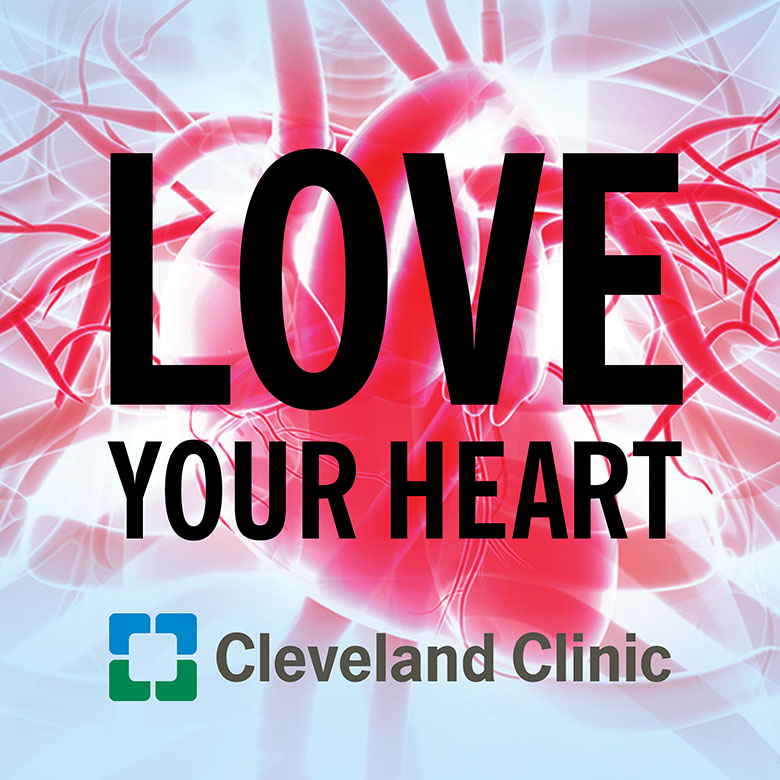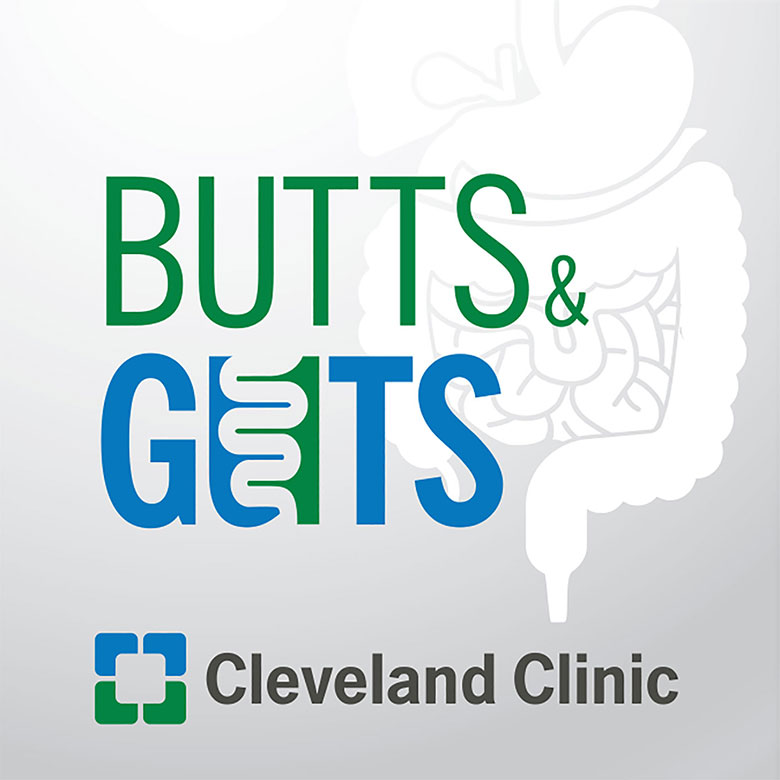Caring for Patients With Peripheral Artery Disease

Discover how a multidisciplinary team tackles peripheral artery disease (PAD) with a patient-first approach. Lee Kirksey, MD, Aravinda Nanjundappa, MBBS, MD, and G. Jay Bishop, MD, share how collaborative care across vascular medicine, vascular surgery and cardiology leads to better outcomes and lifelong management.
Get treatment for PAD at Cleveland Clinic.
Schedule an appointment at Cleveland Clinic by calling 844.868.4339.
Subscribe: Apple Podcasts | Podcast Addict | Buzzsprout | Spotify
Caring for Patients With Peripheral Artery Disease
Podcast Transcript
Announcer:
Welcome to Love Your Heart, brought to you by Cleveland Clinic's Sydell and Arnold Miller Family Heart, Vascular and Thoracic Institute. This podcast will explore disease prevention, testing, medical and surgical treatments, new innovations and more. Enjoy.
Lee Kirksey, MD:
Hi, my name is Lee Kirksey. I'm the Vice Chair of Vascular Surgery here within the Department of Vascular Surgery at the Cleveland Clinic.
Aravinda Nanjundappa, MBBS, MD:
Hi, I'm Aravinda Nanjundappa, an interventional cardiologist with a special interest in peripheral vascular interventions under vascular medicine and cardiology.
Jay Bishop, MD:
Hi, I'm Jay Bishop. I'm the Associate Section Head of Vascular Medicine at the Cleveland Clinic. Vascular medicine is the medical management and non-operative care of the patient with vascular disease.
Lee Kirksey, MD:
I think one of the secret sauces of the Cleveland Clinic is this team-based approach to disease. Maybe you can share with our providers, or referring providers, as well as our patients, how we interact, how we engage.
Aravinda Nanjundappa, MBBS, MD:
At the Cleveland Clinic, as Dr. Kirksey is mentioning, the unique care that patients with peripheral arterial disease or vascular disease can get is a multidisciplinary, multimodality approach. What I mean by that is if somebody has a problem in circulation to the legs, they typically tend to start off with vascular medicine, with my colleague, Dr. Bishop. They evaluate the patient and see - is this a particular arterial problem? Is there a spinal problem? Is it a combined problem?
If it is, they right away start the medical treatment for this patient, which he will elaborate on later, which involves a series of medications such as aspirin, cholesterol, and others. Once that medical treatment has been initiated, they also start to initiate other modalities such as exercise therapy and appropriate testing to differentiate between different conditions. Depending upon the severity, they will have a tendency to call vascular surgery, more so if it is an emergency that the patient needs to save the leg. Somebody like Dr. Kirksey can do an emergency bypass surgery, on an emergency basis, and can do a procedure to help circulation.
If it is something straightforward that the patient can get an angiogram or something, a blockage that can be unblocked with the catheters, both the specialties, vascular surgery and interventional cardiology, somebody like me can treat the patient. Eventually, the patient ends up getting the best options.
Also, we have podiatry, which is another service. If the patient has a wound or ulcer that needs extra care, they can step in, help with amputation or help with the wound care.
Typically, what we do is, even if I think it’s something that I can treat, I always cross-check with somebody like Dr. Kirksey and say, "Hey, what do you think about this case?" He'll come back and say, "I will be the backup person for you. If you need any help, go ahead." But on the other hand, in a more difficult case that needs more expertise than what I can handle, he'll say, "Hey, why don't we take this patient to the operating room? I can combine both surgical approaches and if it needs a catheter, we can treat it both ways."
Eventually, it does not matter who treats the patient, but the patient gets a really good outcome. I'll end by saying it's very, very rare for a patient to have a problem at the Cleveland Clinic because of these multiple approaches and patient-centered approach.
Jay Bishop, MD:
I think one of the big advantages of the Cleveland Clinic is that we do have a team-based approach, a multidisciplinary approach. We are all passionate about vascular disease, and we have wonderful vascular specialists, be it vascular surgery, vascular medicine, or cardiology, that are all laser focused. In the case of peripheral artery disease, as we know, it’s one of the most under-diagnosed entities out there, as well as under-treated.
But we are all passionate about this. We focus on the four pillars of peripheral artery disease therapies. We focus on early detection. We focus on standardized therapies, including consensus-based guidelines and supervised exercise therapy. We focus on patient education and provider education. Lastly, we really focus on covering and looking at outcomes and ensuring high-quality care.
Lee Kirksey, MD:
It's very important to understand, and we all agree that by far, the most important thing is making the diagnoses. Making the diagnoses, for our referring primary care first-line folks, whether you're an APP or whether you're a primary care doctor, is really about asking about functional status for the patient, eliciting those symptoms that allows that patient to get the appropriate testing.
We know that an ankle-brachial index can make that diagnosis. But many patients, especially for me as a vascular surgeon, I treat the medical aspect of PAD (peripheral artery disease), I treat the surgical procedural aspect of PAD. Many patients arrive thinking that the first line of care is a procedure, and we know that the first line of care is getting good medical-optimized therapy. Maybe Jay, you can start off by sharing, what's the optimal medical therapy for these patients?
Jay Bishop, MD:
Yeah, I think you raise a wonderful point, Dr. Kirksey. From a medical management standpoint, first we have to understand: what is peripheral artery disease? It's basically plaque or atherosclerosis built up in the arteries. If you ever take this plaque or atherosclerosis and rub it between your fingers, it's like the consistency of a pencil eraser. As you can imagine, as this plaque build up gets more and more in the arteries, it limits flow down into the legs.
So what are the risk factors for this plaque? Well, the risk factors, there's five major ones. That's high blood pressure, high cholesterol, diabetes, smoking and chronic kidney disease. To a lesser extent, family history, sedentary lifestyle, poor diet, things like that. A lot of the medical management focuses on addressing and mitigating risk factors. If you're a diabetic, for example, we want to keep your hemoglobin A1c, which is a marker for diabetes control, at a good level.
Cholesterol management is very important. Interestingly, the newer agents that we have, including some of the older agents, the statin medicines, there are two of them that at high doses actually stabilize the plaque and can reverse it. We know that smoking is the most potent risk factor you can have for any type of vascular disease, so smoking cessation is important. Then, for blood pressure management, we know there are certain medications that are very friendly to the arteries that we use very, very often. If you look at the statistics, if you have peripheral disease, you have about a 20% chance of having a heart attack in five years and about a 15% chance of getting a stroke.
So, it's not just a leg disease, it's a brain and heart disease. If you have the symptoms of peripheral disease, which only 25% have the classic claudication symptoms, where you have pain in your calves or your thighs or your buttocks when you walk, that disappears when you rest. Then we also focus on improving your symptom-free walking distance, and we do that with the wonderful supervised exercise programs we have throughout the Cleveland Clinic main campus and regional sites.
Lee Kirksey, MD:
This concept that you described of treating these various manifestations of PAD in a very patient-centered and tailored approach for each patient, it's not one size fits all. Maybe you can elaborate on how we evaluate these patients depending upon their lesion anatomy, the patient's disease state, their comorbidities, how we collaborate in that process.
Aravinda Nanjundappa, MBBS, MD:
That's an excellent point from Dr. Kirksey about one treatment option doesn't fit all patients. For example, you have a very young patient with peripheral arterial disease that needs a treatment, then vascular medicine's input becomes the most vital for it. That means exercise therapy, medications and saying, "Continue this until your lifestyle becomes difficult."
If on the other hand, a 50-year-old patient who is a person who walks on the streets, has to be on the road every day, his walking capacity may be reasonable. However, he needs to be able to walk at least a half a mile to one mile for his work and for his daily activity. For him, that blockage may be more significant. He can be somebody who we say, "Hey, for years together, we'll just continue the exercise therapy."
We can try the exercise therapy for a reasonable period of time, three to six months in such a patient. If that fails, it's very reasonable to do an angiogram, see something in the proximal part of the arteries like the femoral artery or the iliac arteries that can be treated with a balloon angioplasty or a stent.
However, when we do the angiogram, sometimes based on the anatomy, we may find some disease at the level of the groin that's at the femoral artery. That femoral artery disease is best treated with surgical treatments.
My treatment with the balloon angioplasty stent is not the best option because when you bend down, you can get a fracture, you can get re-stenosis, and the treatment with surgery is optimal. I'll let Dr. Kirksey explain why such blockages are best treated with surgery rather than with the balloon. That patient-specific care will help the patient to get specific treatment, which will be long-lasting, have less chance to come back and also give them really good durability.
Lee Kirksey, MD:
I think that's very important just to emphasize that our approach to peripheral artery disease here at the Cleveland Clinic is very evidence-based and driven in how we manage patients. You don't come to a vascular surgeon and get a surgical procedure just because you presented to me, a vascular surgeon. I'm looking at that lesion, I'm looking at the cardiovascular risk comorbidities. I'm talking to Dr. Nanjundappa here about how I can optimize one's coronary disease profile. Because, most certainly, if one has severe peripheral artery disease, chronic limb-threatening ischemia with rest pain or tissue loss, you have severe coronary disease, it's really important for me to collaborate to be able to get patients safely through these procedures.
Shifting and thinking about, conceptually, this idea of intermittent claudication, our treatment should be performance-based and quality of life-directed. Recognizing that those patients in whom chronic limb-threatening ischemia is present, you have to act with some timeliness. What's your approach to treating those patients?
Aravinda Nanjundappa, MBBS, MD:
That's the category that leads from the claudication to what is called a limb-threatening ischemia. That means if we do not treat, there is a chance that the limb symptoms can get worse. Patients may develop a wound or a sore, and then if that doesn't heal, there's a chance to get amputation. That subset of patients, we’ve got to be again aggressive in the medical care, what Dr. Bishop mentioned, and get the three specialties involved closely: vascular surgery, interventional cardiology and podiatry. And to some extent, infectious disease, because if there is a wound, for the wound to heal, you need a robust blood supply.
Sometimes there is enough blood supply that it will heal, so the testing is a little bit more advanced called toe brachial index, pressures in the toes, they can help determine. But more often, you may need what is called an angiogram. Then we need a little bit of an advanced skill set. We may need to approach having a surgical cut down to the femoral artery, maybe having access at the foot called pedal artery access. Both the departments, vascular surgery and cardiology, can combine and work together, where we meet somewhere in between for the patient's treatment options to get the artery opened up.
We also have robust clinical trials, where we enroll patients for some of the advanced research for femoral artery and below-knee. This is where patients can get access to medical treatments which may not be available everywhere in the United States. Some of them are medicated balloons, some of them are advanced stents that eventually dissolve. Some of them may be a specialized balloon. This is where the patient gets the best outcomes between different departments with the patient-centered approach, and also has access to advanced therapies which may not be commercially available.
Lee Kirksey, MD:
Absolutely. Someone asked me a couple of weeks ago what the most impactful recent clinical innovation has been, and I think it's the iteration of endovascular platforms. Specifically when we think about intravascular lithoplasty and how that allows us to manage calcium, which is vexing for either surgical or endovascular procedures. Calcium is really where the rubber hits the road.
Aravinda Nanjundappa, MBBS, MD:
Yes, yes.
Lee Kirksey, MD:
Yeah, I think that's very important. Jay, I’ve got to ask. What I think patients don't understand, and sometimes even referring providers don't understand, is this idea that patients with peripheral artery disease need to be followed for their lifetime, because of rates of recurrence either in the treated vascular bed or in the associated vascular beds, including the renal arteries or the cerebral vasculature, or the coronary circulation. We do not send patients out into the wilderness after we perform a procedure and say, "Come back when you have problems." Maybe you can share more on that.
Jay Bishop, MD:
One of the satisfactions I get is longitudinal care of the patient over their lifespan. Peripheral artery disease, for some reason, doesn't get the same cachet as having a heart attack or a stroke, but it should. Taking care of the patient over their lifetime is very important. All of us are very involved in this because we know that the goals of therapy for peripheral artery disease are to decrease the risk of stroke, decrease the risk of heart attack, decrease the risk of amputation, improve walking distance and improve the patient's overall quality of life.
Lee Kirksey, MD:
I'll highlight a couple of other points within the ACC (American College of Cardiology) guidelines. I think this issue of the amplifiers of peripheral artery disease, it’s very important for patients and for providers to understand that profile. We cannot underscore enough what you said earlier, the idea that those patients with chronic kidney disease, those patients with diabetes, those behaviors such as smoking, are at extraordinarily high risk.
Aravinda Nanjundappa, MBBS, MD:
That's the combined care that we need for these patients with peripheral arterial disease. I can't emphasize more than what's been said about peripheral arterial disease. It’s a huge precursor for patients with heart disease and stroke. If you take care of the patients with peripheral artery disease in an appropriate way, you can reduce the risk of their cardiovascular risk of death and heart attack also.
Having this combined approach between multi-specialties, a multi-disciplinary approach to best treat medically, and more importantly is this longitudinal care. That means we follow up on the patient, not just do a procedure and forget about them. That will help the patient for long-term outcomes to lower their cholesterol, lower blood sugar levels, which will improve their ability to walk, lower the chance to have a heart attack, lower the chance for a stroke.
Lee Kirksey, MD:
I'll make one point. At last week's cardiovascular update for 2025, which was well attended, I gave a presentation and one of my slides raised a point, which I think was a little bit provocative, but no doubt, it's proven and it's true. When we look at PAD, it is an enhancer of other cardiovascular conditions.
What I mean by that is, if you have a patient with structural disease and they have bad peripheral artery disease and access issues, it increases the risk of the procedure. If you have a patient with coronary disease and they have bad peripheral disease, it increases the risk. I think that underscores why it's so important, for our imaging, for our medical management, that we be aware that peripheral arterial disease, wherever it presents, is really the end stage of all these other conditions.
Aravinda Nanjundappa, MBBS, MD:
Yes. Like a tip of an iceberg, and the whole disease process is hidden underneath.
Lee Kirksey, MD:
That's right. That's right. We appreciate you all for tuning in. I think this area of PAD represents the Cleveland Clinic mantra of a team of teams. PAD is under-diagnosed, it's under-managed. I think we are trying to change the tide of the management for PAD with this outstanding team that I'm fortunate to be part of.
Announcer:
Thank you for listening to Love Your Heart. We hope you enjoyed the podcast. For more information or to schedule an appointment at Cleveland Clinic, please call 844.868.4339. That's 844.868.4339. We welcome your comments and feedback. Please contact us at heart@ccf.org. Like what you heard? Subscribe wherever you get your podcasts or listen at clevelandclinic.org/LoveYourHeartPodcast.

Love Your Heart
A Cleveland Clinic podcast to help you learn more about heart and vascular disease and conditions affecting your chest. We explore prevention, diagnostic tests, medical and surgical treatments, new innovations and more.


